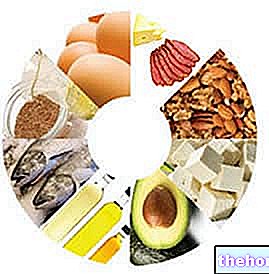For chili we can mean both "Salsa Chili" and the well-known dish "Chili con Carne".
The term "chili" is Spanish and in turn derives from "chīlli", which in the nāhuatl (Aztec) language indicates chilli; as you can easily guess, the fruit of this native plant of South America is a characteristic ingredient of both preparations.
Chili sauce

Chili is mainly used as a sauce in which to dip food, as a glaze sauce and as a marinade sauce; Thai (sweet) is widely used in Thai cuisine and is sometimes included in Japanese sushi recipes.
The ingredients for the chili sauce are: puree or chunks of chillies, vinegar, sugar (sucrose, glucose or fructose) and salt (sodium chloride); the process involves cooking, blending, thickening and packaging. Other additional ingredients of the chili sauce could be water, garlic, corn syrup, spices and flavorings; sometimes, the main element is red tomato, but they are known also the "green chili sauce", made only with green chilli.
Chili sauce is a particularly popular packaged food; The "HJ Heinz Company" is one of the leading producers of red chilli chili sauce in the US and supplies two degrees of spiciness: grade A (Fancy) and grade C (US standard and less spicy).
Chili sauce
Problems with playing the video? Reload the video from youtube.
- Go to the Video Page
- Go to the Video Recipes Section
- Watch the video on youtube
Chilli with beef
In the UK and the US, chili con carne (chili with meat) is often referred to simply as "chili". It is a "stew" type recipe based on: chilli, meat (beef), fat and, often, tomatoes and beans; sometimes, it is enriched with garlic, cumin and onions, and there is no lack of geographical variations. On the other hand, some believe that the noun "chili" can only be attributed to the basic traditional recipe; in this regard, the beans, added only at a later time (as well as tomatoes, etc.), were the object of dispute from numerous experts of the dish.
The original recipe for chili con carne would be based on dried beef, lard (kidney fat), dried chilli and salt; the ingredients are pounded and pressed, dried and boiled.
The dish was made famous thanks to the "Columbian Exposition of Chigago", a world fair held in 1893 to celebrate the 400th anniversary of the discovery of America; within the event, the "San Antonio Chili Stand" made people appreciate the taste of recipe for the Southwestern US public; not surprisingly, today, the chili con carne (Texas-style Chili, composed only of beef and chilli) is officially the national dish of the State of Texas.
There are also contemporary and alternative variants of chili con carne. One of these is the vegan version, or the "meatless chili"; in this case the beef muscle is replaced by tofu (or tempeh or wheat muscle or mopur etc.) and the lard from vegetable oils. Another "variant is the Mexican" green chili con carne ", extremely spicy and usually based on pork with chicken broth and roasted green chillies. Finally, how can we not mention the" chili con carne bianco ", made with white beans and turkey or chicken breast.
Chili con carne goes very well with tortillas, but can also be accompanied by white rice or semolina pasta.
Chili con carne is also an extremely popular packaged, canned or brick food.
Nutritional Characteristics
The nutritional characteristics of chili sauce cannot be unified, as they essentially depend on the recipe of the product. Generally, these are unadvisable foods in case of suffering from the gastric mucosa or irritable colon. Furthermore, sweet sauces contain very high quantities of simple sugars which, if in excess, tend to alter the nutritional balance of the diet.
The same goes for chili con carne. Even leaving out the innovative versions, analyzing a product based on chilli and beef, compared to another one also made up of beans and tomatoes, the nutritional picture changes significantly. The variety with legumes and other vegetables provides fewer calories, less protein, more fiber, more carbohydrates, more antioxidants and a different salt profile. The mineral salts most present in this version compared to the basic recipe are potassium, magnesium and calcium, while iron, in addition to being not very abundant, is also less bioavailable. Being cooked, chili with vegetables and legumes does not benefit from the higher initial concentration of vitamin C, while the B vitamins are lower than the recipe with more meat.
Below, by way of example, we publish the nutritional values of two different products: the chili with meat and beans, and the spicy chili sauce.
Nutritional values





























